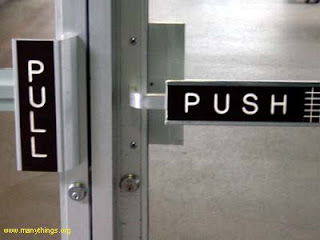
In my view, much of what determines success or failure in handicapping contests comes down to the delicate balance between boldness and conservatism. The push and the pull.
The ultimate aggressive move would be laying down your entire bankroll on a price play in the first contest race. The ultimate in conservatism would be making minimum-bet plays on favorites throughout the card. The first approach could win you a contest once in a blue moon, but most days it would have you broke and out the door at 1:05 p.m. The second tack could have you on the fringe of contention sometimes, and likely would get you at least some of your bankroll back at the end of real-money contests, but realistically it would never win you anything.
Of course, neither of those strategies is optimal; like most things in life, the way, the truth, and the light lie somewhere in between.
I've had a number of contest also-ran finishes over the years that I attribute at least partly to being overly aggressive -- either making a big bet early on or too quickly squandering a leaderboard position with substantial bets. I don't recall ever kicking myself afterwards for being too conservative, which I believe would sting more than being too bold.
But the challenge, and the beauty, of finding the sweet spot on the safety-risk spectrum is that it is a moving target, and you don't know where the sweet spot was until after the Official sign lights on the toteboard after the final contest race. If the chalk won a bunch of races on a given day, conservatism was rewarded, whereas risk takers won if there were prices. Similarly, you don't know which of your selections will win beforehand, so having only $10 on that 15-1 winner looks pretty pansy-ass at the end of a losing day, while putting $150 on a 15-1 loser would probably seem foolish and overly risky in retrospect.
In my view, a contest player's best approach is to operate within a band of the safety-risk spectrum and be ready and willing to adjust on the fly. So say on a scale of 1-10, 1 is super conservative and 10 is as ballsy as you can get. I like to think I operate in about the 6-to-7.5 range on balance, and I'm willing to go anywhere from 1 (when capital preservation is needed) to 10 (when a Hail Mary is my only hope).
One application of this may come in this Saturday's Simulcast Series Challenge #1 at Monmouth Park. From what I understand the only rule change is that the top 15 finishers qualify for the invitational tourney in April, up from 10 last year. I think this may make many players a bit more conservative, simply because you don't got's to do as good to come in 15th place as you do 10th place. Based on that theory, I may decide to up my risk taking, because as Warren Buffett says, be greedy when others are fearful and be fearful when others are greedy.
But we'll see, it will be an on-the-fly call, and of course I have to pick some winners for any of this mumbo jumbo to matter a hill of beans.

Good poost
ReplyDelete